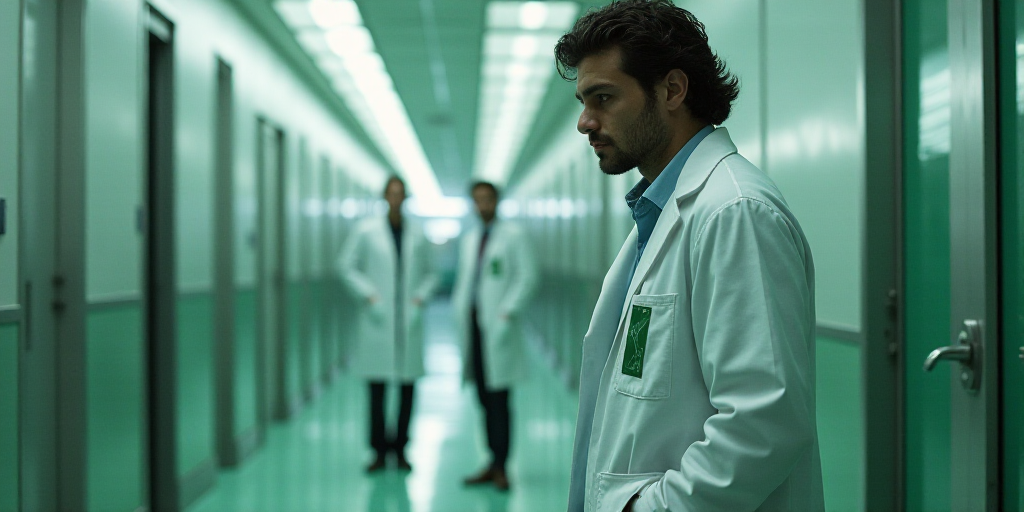Introduction to the New Biosecurity Laboratory at Cinvestav
In a move reminiscent of science fiction thrillers like “12 Monkeys” or “Outbreak,” the new Biosecurity Laboratory (LBS-3) at Cinvestav Zacatenco ensures that such scenarios remain firmly within the realm of cinema. This state-of-the-art facility is designed to investigate high-risk pathogens for human health, including those without existing treatments, antibiotics, or vaccines that could potentially be lethal.
Understanding the Need for Biosecurity Levels
Biosecurity in laboratories may seem like a science fiction concept, but working with pathogens, especially those affecting humans, demands stringent safety measures. Dr. José Tapia Ramírez, a genetics and molecular biology specialist and coordinator of the laboratory, explains that there are four levels of biosecurity:
- Level 1: Microorganisms that pose no threat to researchers or the environment, requiring minimal equipment.
- Level 2: Patógenos that can cause illness in humans but are treatable or curable, necessitating a secure biological cabin and controlled airflow.
- Level 3: High-containment level, where special protective clothing, sealed cabins, and negative pressure are required to prevent the escape of microorganisms.
- Level 4: The highest containment level, housing exotic microorganisms easily transmissible between humans.
The LBS-3 at Cinvestav Zacatenco operates under Level 3 and 4 biosecurity, ensuring the safety of researchers and the surrounding environment while working with deadly pathogens without available vaccines.
Key Features of the LBS-3 Laboratory
The laboratory boasts dual doors, double security, and a pre-room with an air shower to minimize potential pathogen escape. Continuous 24/7 monitoring and recording of all activities ensure safety.
“Air extraction systems are the heart of biosecurity laboratories. Maintaining negative pressure is crucial; nothing can go wrong, so emergency supplies are always available,” explains Dr. Tapia.
Animal Research Capabilities
The LBS-3 not only focuses on human pathogens but also conducts experiments with animals. Dr. Jorge Fernández Hernández, coordinator of the Laboratory Animal Production and Experimentation Unit (Upeal), highlights that this lab contains a unique double-protected ABSL-3 facility in Mexico and Latin America. This setup generates immediate alerts for researchers in case of any issues.
The Tyvek suit worn by researchers in the most restricted area is battery-powered and features an autonomous respiration system, allowing investigators to breathe filtered air. This enables the diagnosis of animal diseases caused by viruses like influenza or bacteria such as tuberculosis.
Project Development and Future Implications
Cinvestav Zacatenco previously had an LBS-2 during the influenza epidemic. In 2020, as COVID-19 emerged, the LBS-2 handled samples from hospitals, the National Guard, Cinvestav itself, and pharmaceutical companies while assisting the Mexico City diagnostics. Recognizing the need for further advancements, Cinvestav developed the LBS-3 with future pandemias and preclinical trials in mind.
Martha Espinosa, Cinvestav’s planning secretary, emphasizes that the LBS-3 has unparalleled installation capabilities and the potential to conduct rigorous preclinical studies on various pathogens. This development is a significant step forward for the country, as it prepares for future health challenges.
Key Questions and Answers
- What is the purpose of the new LBS-3 laboratory at Cinvestav? The LBS-3 aims to investigate high-risk pathogens for human health, including those without existing treatments, antibiotics, or vaccines.
- What biosecurity levels does the LBS-3 operate under? The laboratory functions under Level 3 and 4 biosecurity, ensuring the safety of researchers and the environment while working with deadly pathogens.
- What unique features does the LBS-3 possess? The laboratory includes a double-protected ABSL-3 facility, battery-powered Tyvek suits with autonomous respiration systems, and continuous 24/7 monitoring.
- How will the LBS-3 contribute to future health challenges? The LBS-3 prepares the country for future pandemias through rigorous preclinical studies and advancements in pathogen research.






